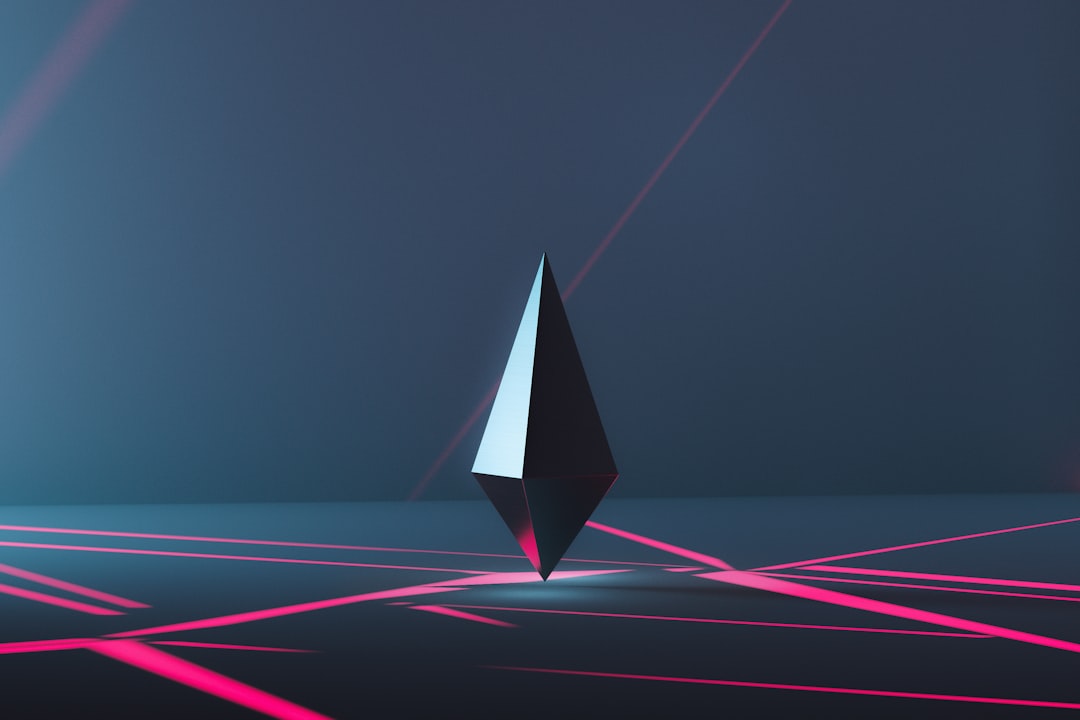Greetings, fellow digital enthusiasts! Today, we’re diving into the fascinating world of NFTs, or non-fungible tokens. If you’re not already familiar with them, let me tell you: they’re a game-changer.
So, what are NFTs exactly? In a nutshell, they’re unique digital assets that are verified on the blockchain, which means they can’t be duplicated, destroyed, or tampered with. This is a big deal in a world where digital copies of everything can be made with just a few clicks.
But why are they significant? Well, for starters, NFTs have opened up a whole new world of possibilities for creators, collectors, and investors. They provide a way for artists, musicians, and game developers to monetize their work and connect directly with their audience. They allow collectors to own a one-of-a-kind piece of digital art or a rare in-game item. And they offer investors a new asset class to diversify their portfolio.
But beyond that, NFTs represent a shift in the way we think about digital ownership. For years, we’ve been conditioned to accept that digital content is ephemeral, disposable, and ultimately, not worth much. But NFTs challenge that notion by offering a way to assign real value to digital assets. They allow us to own and trade digital items just like we do with physical items, and in doing so, they’re changing the game for everyone involved.
So, whether you’re an artist looking for a new way to monetize your work, a collector interested in owning a unique piece of digital art, or an investor looking for the next big thing, NFTs are definitely worth paying attention to. In the following sections, we’ll dive deeper into what they are, how they work, and their use cases. Let’s get started!
What are NFTs?
If you’re new to the world of digital assets, you may have heard the term NFTs being thrown around a lot lately. But what exactly are NFTs, and how do they differ from cryptocurrencies?
In simple terms, NFTs or non-fungible tokens are unique digital assets that represent ownership of items like art, music, videos, or other forms of content. Unlike cryptocurrencies like Bitcoin or Ethereum, which are fungible and interchangeable, NFTs are one-of-a-kind items that can’t be replicated or exchanged for other tokens of the same value.
Think of NFTs like collectibles, such as rare baseball cards or limited-edition sneakers. They hold value because of their uniqueness and scarcity, and collectors are willing to pay high prices for them.
One of the primary benefits of NFTs is that they provide proof of ownership and authenticity on the blockchain, a decentralized, public ledger that records all transactions. This means that creators can prove that they own the original digital asset and can sell or license it to others without fear of it being copied or stolen.
However, it’s important to note that owning an NFT doesn’t necessarily mean that you own the copyright or intellectual property rights to the underlying asset. It simply means that you own a digital certificate of ownership.
So, while NFTs may seem like a complicated and confusing concept, they are actually quite simple. They represent a new and exciting way for creators to monetize their digital creations, and for collectors to own unique and rare digital assets. The possibilities of NFTs are endless, and we can’t wait to see how they continue to shape the digital world.
Think of NFTs like collectibles, such as rare baseball cards or limited-edition sneakers.
How NFTs Work: An Overview of the Technology Behind Non-Fungible Tokens and the Blockchain
If you’re reading this post, you’ve probably heard of NFTs and are curious about how they work. NFTs are unique digital assets that are created using blockchain technology. Unlike cryptocurrencies like Bitcoin, which are fungible and can be exchanged for other units of the same value, NFTs are one-of-a-kind and cannot be duplicated or exchanged for something of equal value.
So how do NFTs work? It all starts with the blockchain. The blockchain is a decentralized digital ledger that records transactions in a secure and transparent way. Each block in the blockchain contains a record of several transactions, and once a block is added to the chain, it cannot be altered or deleted.
When an NFT is created, it is assigned a unique digital signature, or “hash,” which is recorded on the blockchain. This ensures that the NFT is one-of-a-kind and cannot be duplicated or altered. The owner of an NFT can transfer ownership to another person by transferring the digital signature on the blockchain, just like transferring ownership of a physical asset.
One of the key advantages of NFTs is that they can be used to verify ownership and authenticity of digital assets. For example, an NFT can be used to authenticate a piece of artwork or a music recording, ensuring that the owner has the original and not a copy.
But NFTs are not just limited to art and music. They can be used in a variety of industries, including gaming. In fact, some of the most popular use cases for NFTs are in gaming, where they can be used to create unique in-game items and even entire virtual worlds.
NFTs are a revolutionary technology that is changing the way we think about digital ownership. By leveraging the power of the blockchain, NFTs can create unique, one-of-a-kind digital assets that can be verified and authenticated. As the adoption of NFTs continues to grow, we can expect to see even more innovative use cases and applications of this exciting technology.
Each block in the blockchain contains a record of several transactions, and once a block is added to the chain, it cannot be altered or deleted.
The Use Cases of NFTs: Examples of How NFTs are Being Used in Gaming, Art, and Music Industries
When it comes to NFTs, the possibilities are endless. The technology has opened up doors for creators of all kinds to monetize their work and expand their audience. One industry that has been heavily impacted by NFTs is gaming.
In the gaming world, NFTs are being used to create unique in-game assets that can be bought, sold, and traded between players. These assets can range from rare skins to exclusive digital items that give players an edge in gameplay. The use of NFTs in gaming has created a new market for gamers to invest in, making it a lucrative opportunity for developers and players alike.
The art world has also embraced NFTs, creating a new platform for artists to showcase and sell their work. NFTs provide a way for artists to authenticate their digital creations and sell them as unique, one-of-a-kind pieces. This has revolutionized the art market, as artists can now reach a global audience and monetize their work in a way that was not possible before.
The music industry has also seen the benefits of NFTs, as musicians can now sell digital collectibles, such as concert tickets or exclusive merchandise, directly to their fans. This has opened up new revenue streams for musicians, as they can now bypass traditional ticket sellers and merchandise distributors.
Overall, NFTs have given creators the ability to monetize their digital creations in a way that was not possible before. The use cases in gaming, art, and music industries are just the beginning of what is possible with NFTs. As the technology continues to evolve, we can expect to see even more innovative and creative use cases emerge.
One industry that has been heavily impacted by NFTs is gaming.
The Benefits of NFTs: Advantages for Creators, Collectors, and Investors
NFTs are rapidly gaining popularity in the digital world, and for good reason. Let’s take a closer look at the benefits of NFTs for creators, collectors, and investors.
Firstly, for creators, NFTs open up a whole new world of possibilities. With NFTs, creators can monetize their digital content in a way that was previously impossible. By creating unique, one-of-a-kind NFTs, creators can sell their work directly to their fans and supporters, without the need for intermediaries such as galleries or auction houses. This allows creators to retain more control over their work and receive a greater share of the profits. Additionally, NFTs allow creators to establish a direct connection with their fans, facilitating a more personal and meaningful relationship.
Secondly, for collectors, NFTs offer a new level of ownership and authenticity. With NFTs, collectors can own a unique, authenticated piece of digital content, with a verifiable ownership record on the blockchain. This means that the value of an NFT is not just in the content itself, but in the history and provenance of that content. This makes NFTs particularly appealing to collectors who value rarity, uniqueness, and authenticity.
Finally, for investors, NFTs offer a new asset class with potentially high returns. As NFTs become more popular and valuable, there is significant potential for investors to profit from buying and selling them. Additionally, NFTs provide a new way for investors to diversify their portfolios and invest in the digital economy.
Overall, the benefits of NFTs are significant and wide-ranging. They offer a new way for creators to monetize their work, collectors to own unique and authenticated digital content, and investors to profit from a new asset class. As NFTs continue to gain momentum, it will be exciting to see how they continue to revolutionize the digital world.
Let’s take a closer look at the benefits of NFTs for creators, collectors, and investors.
The future of NFTs
As NFTs continue to gain popularity and acceptance, it’s hard not to wonder about their future. Will they become a mainstream currency for digital assets, or will they remain a niche phenomenon? Let’s explore some predictions on the growth and adoption of NFTs and their impact on the digital economy.
Firstly, we can expect to see more industries adopting NFTs. While the gaming, art, and music industries have been early adopters, there’s potential for NFTs to be used in a wide range of fields. For example, NFTs can be used to verify the authenticity of luxury goods or even to track carbon credits. As more industries experiment with NFTs, we can expect to see an increase in demand for these digital assets.
Secondly, we can expect to see more decentralized marketplaces for NFTs. Currently, NFTs are primarily bought and sold on centralized platforms like OpenSea and Nifty Gateway. However, as blockchain technology continues to evolve, we can expect to see more decentralized marketplaces emerge. These marketplaces will allow for more transparency and autonomy in the buying and selling of NFTs, which could further boost their adoption.
Thirdly, we can expect to see more collaboration between creators and collectors. Currently, NFTs are primarily seen as a way for creators to monetize their digital assets. However, as more collectors enter the NFT space, we can expect to see more collaboration between the two groups. For example, a collector may commission an artist to create an NFT exclusively for them, or a musician may release an NFT that includes exclusive content for their fans. This collaboration could further fuel the growth of the NFT market.
Lastly, the future of NFTs will ultimately be shaped by their users. As more people enter the NFT space, they will bring new ideas, use cases, and innovations. We can expect to see experimentation with new types of NFTs, new ways of using them, and even new blockchains that are specifically designed for NFTs. The future of NFTs is not predetermined – it’s up to all of us to shape it.
The future of NFTs is exciting and full of potential. While there are still challenges to be addressed, such as the environmental impact of blockchain technology, NFTs have the power to revolutionize digital ownership. Whether you’re a creator, collector, or investor, now is the perfect time to get involved in the NFT space and help shape its future.
Currently, NFTs are primarily seen as a way for creators to monetize their digital assets.
Conclusion: Recap of the Rise of NFTs and Their Potential to Revolutionize Digital Ownership
Wow, what a journey it has been exploring the world of NFTs! We started off with a basic overview of what NFTs are and their significance in the digital world. Then, we dove deeper into the technology behind NFTs and how they differ from cryptocurrencies. We explored the many use cases of NFTs, from gaming to art to music, and discussed the benefits that they offer to creators, collectors, and investors.
But what’s next for NFTs? As we look to the future, the potential for NFTs to revolutionize digital ownership is staggering. We’ve seen glimpses of it already, with the high-profile sales of digital art and collectibles. But the sky is truly the limit for NFTs.
One of the most exciting things about NFTs is their ability to democratize ownership of digital content. No longer will the rights to a piece of art or music be limited to a select few. With NFTs, creators can offer their work to a global audience, and fans can own a piece of the action.
It’s also worth noting that we’ve only scratched the surface of what’s possible with NFTs. As the technology continues to evolve and new use cases emerge, we’re sure to see even more exciting developments in the world of digital ownership.
So, whether you’re a creator, collector, or just someone with a curious mind, we encourage you to keep an eye on NFTs. They’re still a relatively new concept, but their potential is enormous. Who knows? Maybe one day you’ll own a rare piece of digital art or a unique collectible, all thanks to the power of NFTs.





